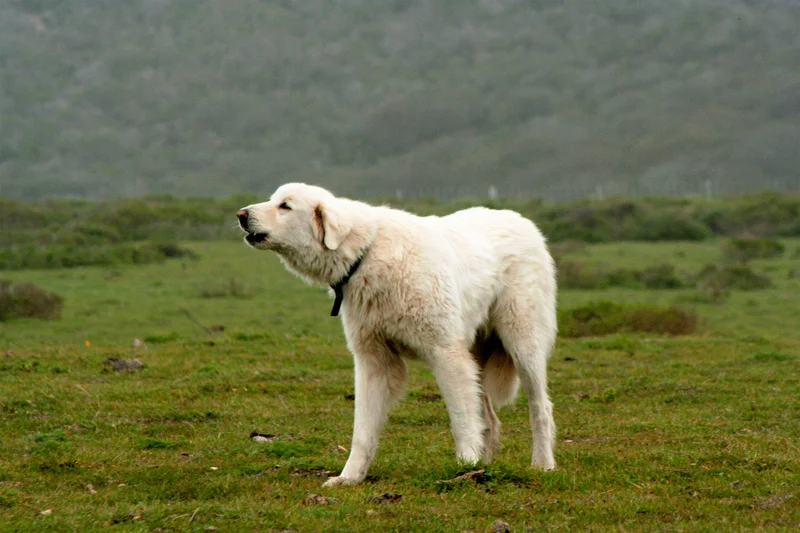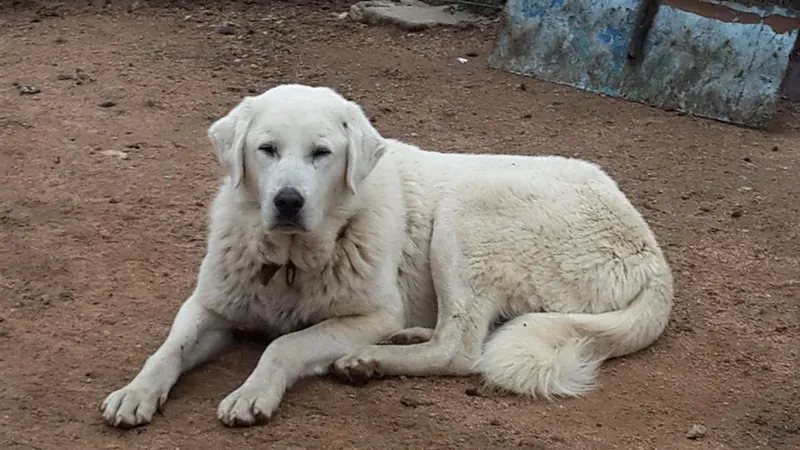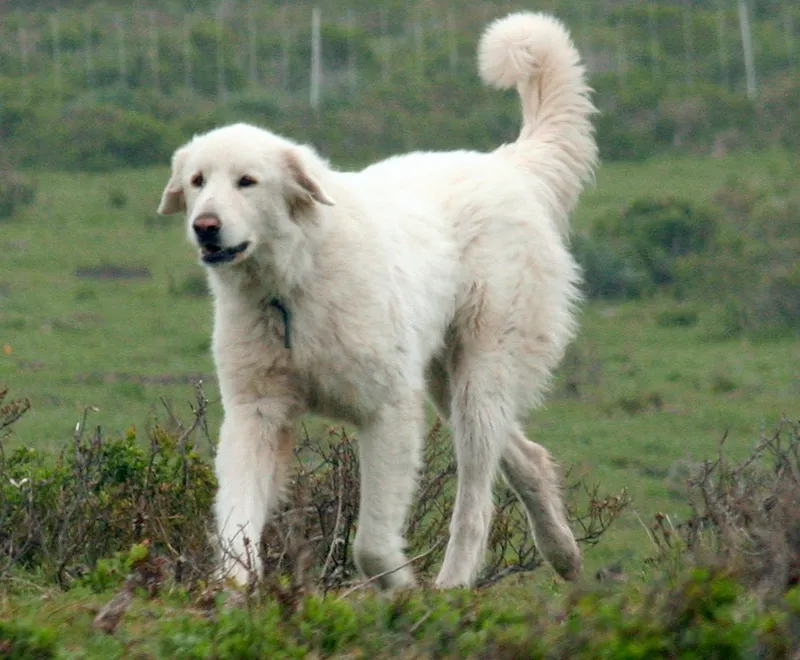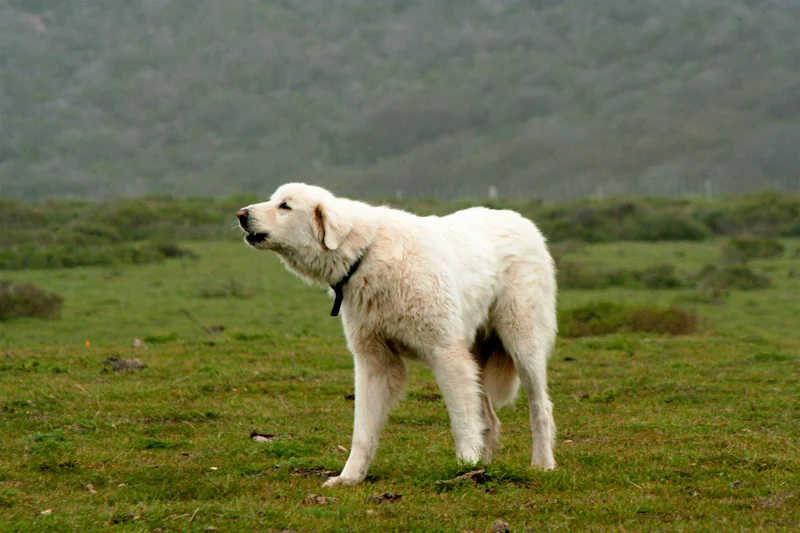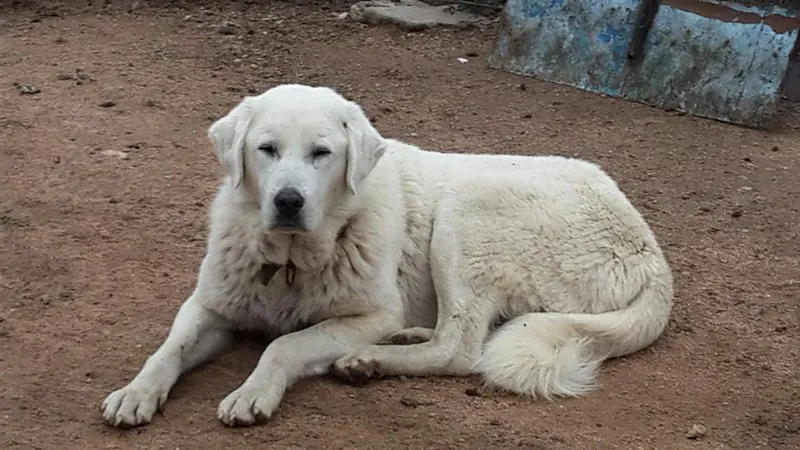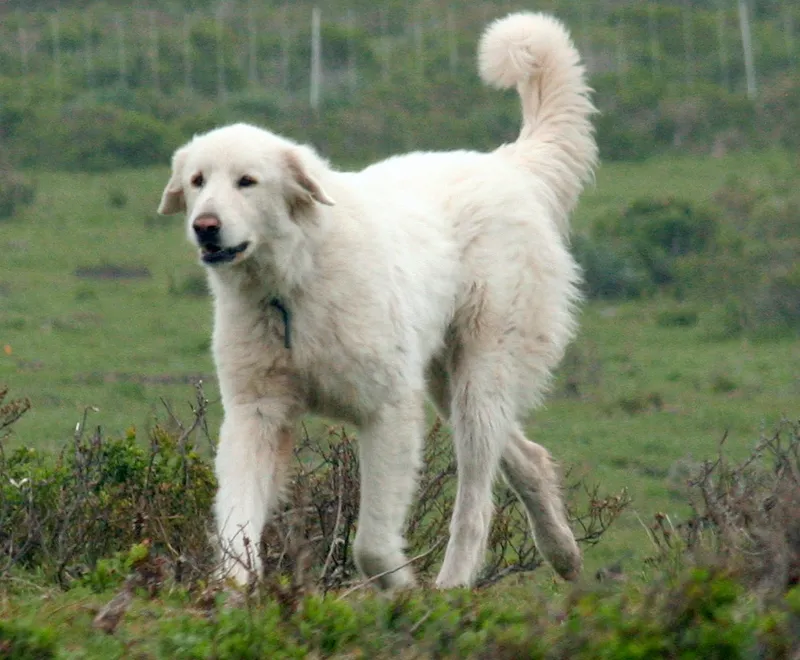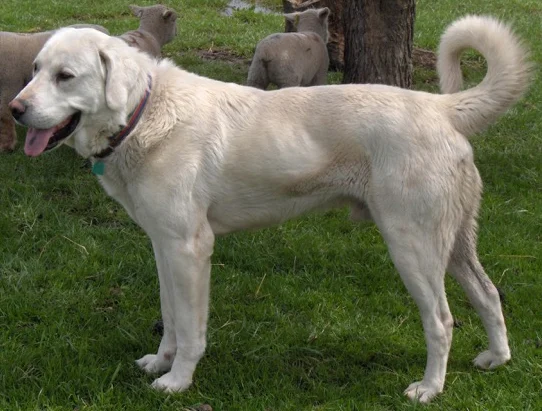Akbash
The Akbash is a large, independent dog from Turkey, known for its guarding instincts and loyalty. Ideal for experienced owners, it thrives with consistent training.
Overview
🐕Breed Overview
The Akbash is a majestic and ancient breed originating from Turkey, known for its impressive size and noble demeanor. Standing between 27 to 32 inches tall and weighing between 75 to 125 pounds, the Akbash is a very large dog with a striking white coat that can sometimes feature light biscuit coloring on the ears. This breed has been used for centuries as a livestock guardian, living alongside sheep and goats to protect them from predators.
With a calm and discerning temperament, the Akbash is not aggressive but rather suspicious of strangers, making it an excellent watchdog. Its independent nature means that it requires an experienced owner who can provide consistent training and socialization. While the Akbash is not particularly playful, it forms strong bonds with its family and can be a loyal companion.
Regular exercise is essential to keep this breed healthy and happy, as they thrive in environments where they can patrol and protect their territory. Overall, the Akbash is a remarkable breed that excels in its role as a guardian and protector, making it a valuable addition to any farm or ranch.
Breed Characteristics
Family & Friends
Good Behavior
Get Up & Go
Household Harmony
Temperament & Personality
✨Key Traits
🐕Core Temperament
The Akbash has a temperament that is calm, confident, and protective. They are not aggressive but can be suspicious of strangers, making them effective watchdogs. This breed is known for its independence, which can sometimes lead to challenges in training.
However, with consistent guidance and socialization, they can become well-adjusted companions. Akbash dogs are typically gentle with livestock and can be very affectionate with their families. Their natural instincts drive them to protect their territory, and they are known to be brave and loyal to their owners.
Proper training and socialization are essential to ensure they are well-behaved around other pets and strangers.
💫Personality Profile
The Akbash is a calm and independent breed, known for its bravery and loyalty. They are not overly affectionate but form strong bonds with their families.
While they can be reserved around strangers, they are protective of their territory and livestock. Their intelligence allows them to assess situations and respond appropriately, making them excellent guardians.
However, their independent nature can make training a challenge, requiring experienced handlers who can provide consistent guidance and socialization. Akbash dogs thrive in environments where they can patrol and protect, and they are happiest when given a job that aligns with their instincts.
🔊Vocal Tendencies
The Akbash is not a particularly vocal breed, but they will bark to alert their owners of potential threats or changes in their environment. Their barking is usually reserved for when they perceive something unusual in their territory.
While they are not excessive barkers, they will use their voice to communicate when necessary, especially when guarding livestock. Their vocalizations can range from deep barks to growls, depending on the situation.
Affection & Social Traits
Energy & Activity
Communication Style
Care Requirements
🏃♂️Exercise Requirements
Daily Exercise
The Akbash requires a moderate amount of exercise to maintain its physical and mental health. Ideally, an adult Akbash should engage in at least 60 to 90 minutes of exercise daily.
This can include activities such as brisk walks, running, or playing in a secure area. Given their history as livestock guardians, they enjoy patrolling their territory, which can be incorporated into their exercise routine.
Puppies should have shorter, more frequent play sessions to avoid overexertion, while senior dogs may require gentler activities to accommodate their energy levels. Regular exercise helps prevent obesity, promotes cardiovascular health, and reduces behavioral issues stemming from boredom or pent-up energy.
🏠Living & Adaptability
Space Requirements
The Akbash is a very large breed that requires ample space to thrive. Ideally, they should have access to a large, securely fenced yard where they can roam freely.
While they can adapt to living in a house with a yard, they are not well-suited for apartment living due to their size and exercise needs. In smaller spaces, they may become restless and exhibit destructive behaviors.
Owners in urban settings should ensure they can provide sufficient daily exercise and mental stimulation to keep their Akbash happy and healthy.
Climate Preference
🍲Feeding Guide
Schedule
Food Types
Portion Size
Special Nutritional Needs
The Akbash, being a large breed, may be prone to certain health issues such as hip dysplasia. Therefore, it is essential to provide a balanced diet that supports joint health, including omega fatty acids and glucosamine supplements.
Avoid overfeeding, as obesity can exacerbate health problems. Puppies should be fed a diet formulated for large breeds to ensure proper growth and development.
✨Grooming Requirements
Grooming Overview
The Akbash has a smooth to medium-full double coat that requires regular grooming to keep it healthy and free of mats. Brushing should be done at least once a week, with more frequent brushing during shedding seasons to manage loose hair.
Use a slicker brush or a grooming rake to remove dead hair and prevent tangles. Bathing should be done as needed, typically every few months, to maintain coat cleanliness without stripping natural oils.
Regular nail trimming and ear cleaning are also important to keep the Akbash comfortable and healthy.
Care Schedule
Brush weekly; bathe every 2-3 months; trim nails every 2-4 weeks.
Health Profile
⚕️Health Care
Regular veterinary check-ups, vaccinations, and preventive care are crucial for the Akbash's health. Routine health screenings can help detect potential issues early, allowing for timely intervention. Maintaining a balanced diet and providing regular exercise are also key factors in promoting a long and healthy life for this breed.
⏳Average Lifespan
Genetic Factors
Genetics play a significant role in the Akbash's lifespan and health. Responsible breeding practices are essential to minimize hereditary health issues.
Potential owners should seek breeders who conduct health screenings for common conditions like hip dysplasia and bloat. Genetic diversity within the breed is also important for maintaining overall health and longevity.
Living Conditions
The Akbash thrives in environments where it can have space to roam and patrol. A secure, large yard is ideal, as it allows the dog to engage in its natural guarding behaviors.
Living in a rural area with access to livestock is optimal, as this breed is happiest when given a job to do. Urban environments can lead to stress and behavioral issues if the Akbash does not receive adequate exercise and mental stimulation.
Additionally, exposure to various weather conditions is important, as the Akbash is adapted to outdoor living.
Training
🧠Intelligence & Trainability
💪Work Drive
The Akbash has a strong work drive, stemming from its history as a livestock guardian. They thrive when given a job to do, whether it's patrolling a property or participating in dog sports that challenge their intelligence and physical abilities.
Mental stimulation is essential to prevent boredom, which can lead to destructive behaviors. Activities such as scent work, agility training, or even simple tasks like fetching items can keep them engaged and satisfied.
Owners should provide regular opportunities for their Akbash to exercise both their bodies and minds.
⚠️Training Considerations
Training an Akbash can present challenges due to their independent nature and strong instincts. They may be reluctant to follow commands, especially if they perceive them as unnecessary.
Consistent, positive reinforcement training methods are essential to encourage obedience. Socialization from a young age is crucial to help them become well-adjusted adults.
Potential behavioral challenges include territorial aggression towards strangers and other dogs, which can be mitigated through early socialization and exposure to various environments. Owners should be prepared to invest time and patience into training and managing their Akbash's behavior.
📝Training Tips
To effectively train an Akbash, start with basic obedience commands and gradually introduce more complex tasks. Use positive reinforcement techniques, such as treats and praise, to motivate them. Keep training sessions short and engaging to maintain their interest.
Incorporate socialization opportunities with other dogs and people to help them develop good manners. Consistency is key; ensure all family members use the same commands and training methods. Be patient, as the Akbash may take longer to respond than more eager-to-please breeds.
Consider enrolling in a training class with a professional who understands the breed's unique traits.
History & Heritage
📜Origin Story
The Akbash dog, whose name translates to 'white head' in Turkish, has a rich history that dates back to ancient times. It is believed that the breed was developed by nomadic tribes in Turkey who needed a reliable protector for their livestock.
As agriculture began to flourish, the demand for effective livestock guardians increased, leading to the refinement of the Akbash's characteristics. The breed's ability to live independently among livestock, often unsupervised for long periods, showcases its intelligence and bravery.
The Akbash's presence in Turkish culture is significant, as it represents the bond between humans and their working dogs, essential for survival in rural settings.
⏳Development History
The Akbash is believed to have originated in the region of Akbaş in western Turkey, where it was bred to guard livestock. Its development is thought to involve a mix of sight hound and mastiff breeds, resulting in a dog that is both agile and powerful.
The breed was introduced to North America in the 1970s by Judith and David Nelson, who were researching white-colored dogs in Turkey. Over time, the Akbash has maintained its traditional role as a livestock guardian, adapting to various environments while preserving its unique traits.
🛡️Purpose & Historical Role
The primary purpose of the Akbash has always been to guard livestock, particularly sheep and goats, from predators such as wolves and bears. This breed is known for its ability to assess threats and respond appropriately, often using barking as a warning signal before taking action.
Historically, Akbash dogs have lived alongside their charges, forming strong bonds with them while remaining vigilant protectors. In modern times, they continue to serve as livestock guardians, but they can also be companions for experienced dog owners who understand their unique needs.
🏺Cultural Significance
The Akbash has deep historical roots in Turkey, where it has been used for centuries as a livestock guardian. This breed embodies the traditional practices of Turkish shepherds, who relied on these dogs to protect their flocks from predators.
The Akbash's role in agriculture has made it a symbol of rural life in Turkey, and it continues to be valued for its protective instincts and loyalty. In popular culture, the Akbash is less recognized than other breeds, but its unique characteristics and heritage contribute to its significance as a working dog.
Conservation Status
This breed is less common but has stable populations in certain regions.
